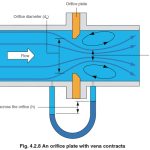Green Engineering principle suggests that a process must be inherently safe. This is the reason why scientists and researchers have been working on greener sulphonation methods. For example, instead of using sulphuric acid, researchers replaced it with silica sulphuric acid for the sulphonation of aromatic rings. In this way, researchers avoided the formation of sulfones as a by-product and the destruction of the aromatic rings that usually sulphuric acid causes. Silica gel that is used in this process can also be used again and again without loss of activity.
At the same time, engineers have been trying to make the process matter and energy efficient. This calls for process intensification in which reaction conditions can be optimized with the use of new technologies. For example, the use of microwave and ultrasound technologies has already been proved on the laboratory scale.
What’s stopping green engineering to flourish in the existing industry is the amount of R&D expenditure. Offering a glimmer of hope, The Hindu reported that currently the R&D expenditure was less than 0.5 percent of the industry’s revenue while it covered an event where:
A significant scale-up in spending to the global benchmark of 4%



Comments are closed